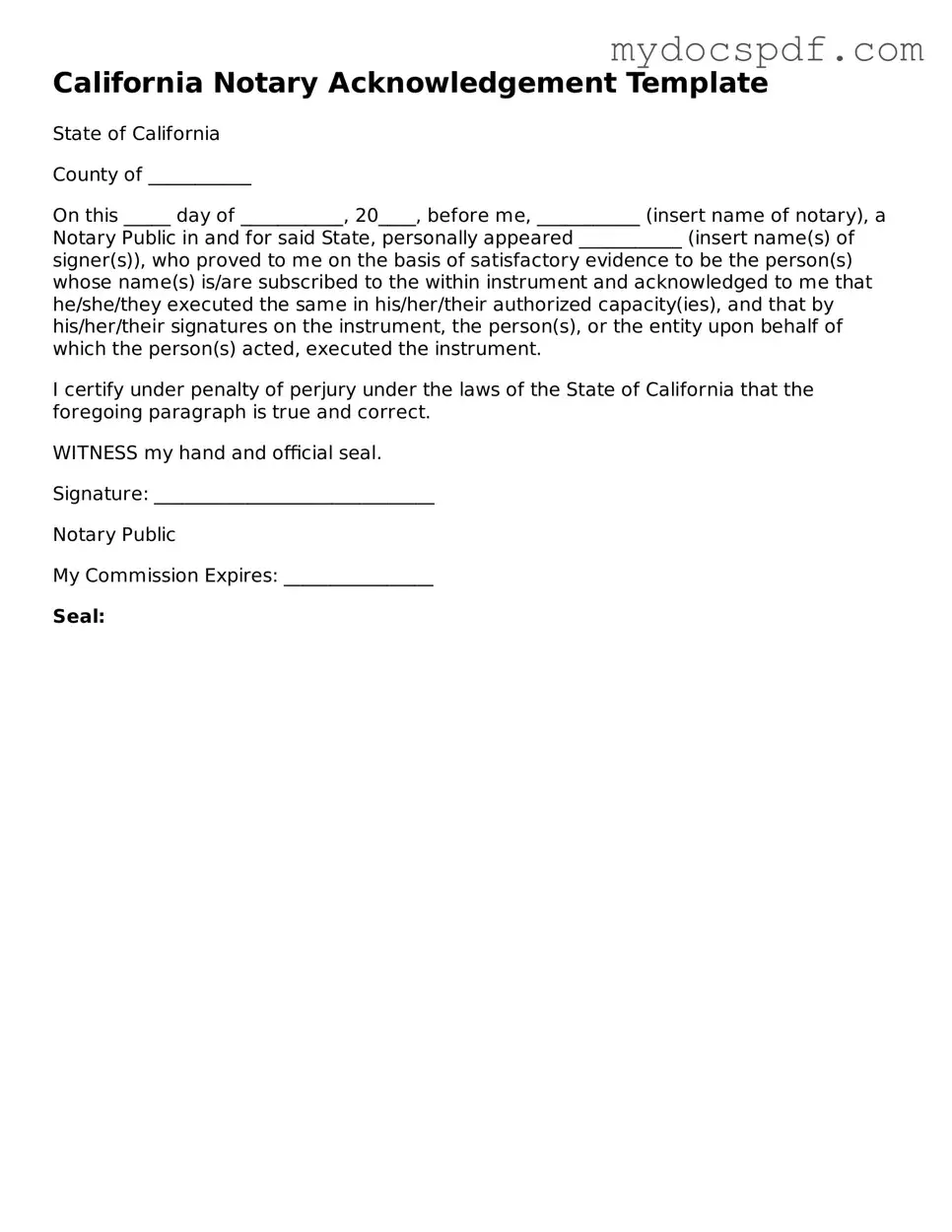Fillable California Notary Acknowledgement Document
The California Notary Acknowledgment form serves as a vital legal document that verifies a signer’s identity and their willingness to sign a particular document. This form plays a crucial role in preventing fraud and ensuring that the signing process is conducted with integrity. Understanding its components and requirements can empower individuals to navigate legal transactions with confidence.
Access Editor Here
